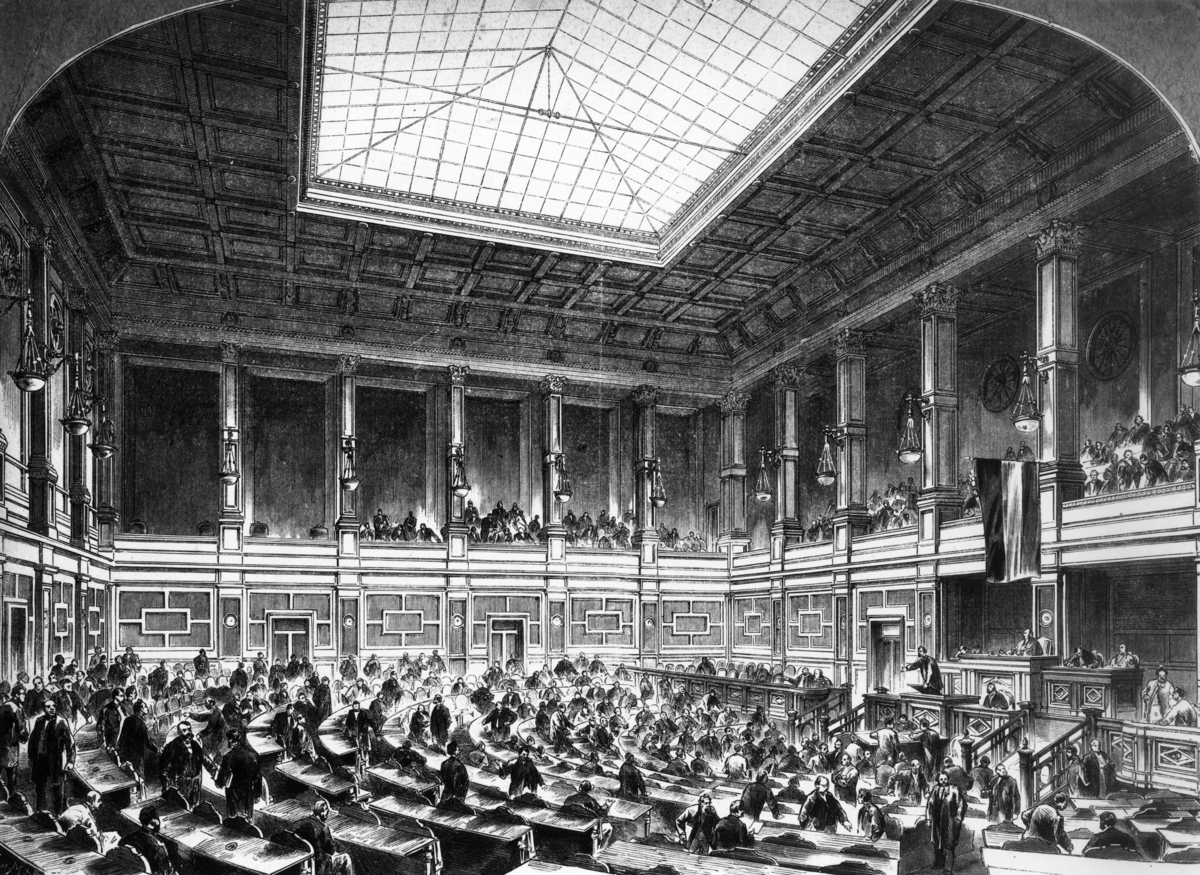Abstract
In March 1871, the first session of the new German Reichstag convened
in the building occupied by the Prussian House of Deputies at Leipziger
Straße 75. The bad acoustics, lack of air, and cramped quarters raised
immediate complaints from the 382 deputies, who decided within days that
a new building was required. As a provisional solution, the former Royal
Porcelain Manufactory next door (Leipziger Straße 4) was renovated at
great speed (despite a construction workers’ strike), so that the second
session of the Reichstag, which began on October 13, 1871, could be held
in the new quarters. While it was originally thought that a still newer,
purpose-built Reichstag could be constructed from the ground up within
five years, the “provisional” home at Leipziger Straße 4 was used until
Paul Wallot’s (1841–1912) Reichstag building was opened in 1894.
(Wallot’s building, which occupies the land immediately northwest of the
Brandenburg Gate, was famously reconstructed by architect Norman Forster
from 1992 to 1999.) In contrast to Wallot’s grand, overscaled structure,
which bears the famous inscription “To the German People” [“Dem
Deutschen Volke”], the provisional Reichstag building was squeezed in
between the more imposing Prussian House of Lords immediately to the
west of it and the War Ministry to the east. It surely must have pleased
Bismarck that the national parliament was overshadowed, both literally
and figuratively, by two buildings symbolizing Prussian prestige and
power. This woodcut showing the Reichstag’s main chamber and public
galleries dates from 1872.
